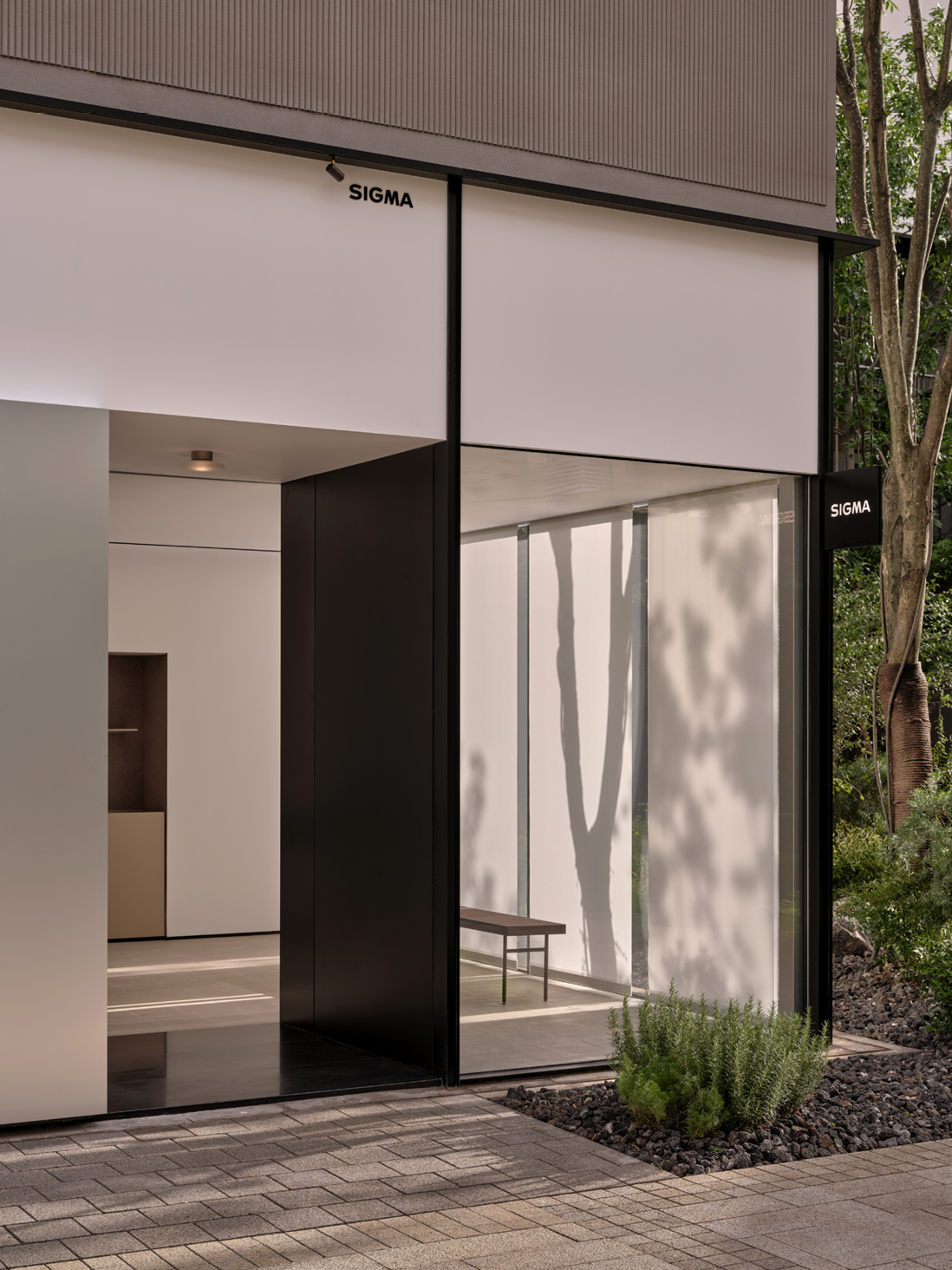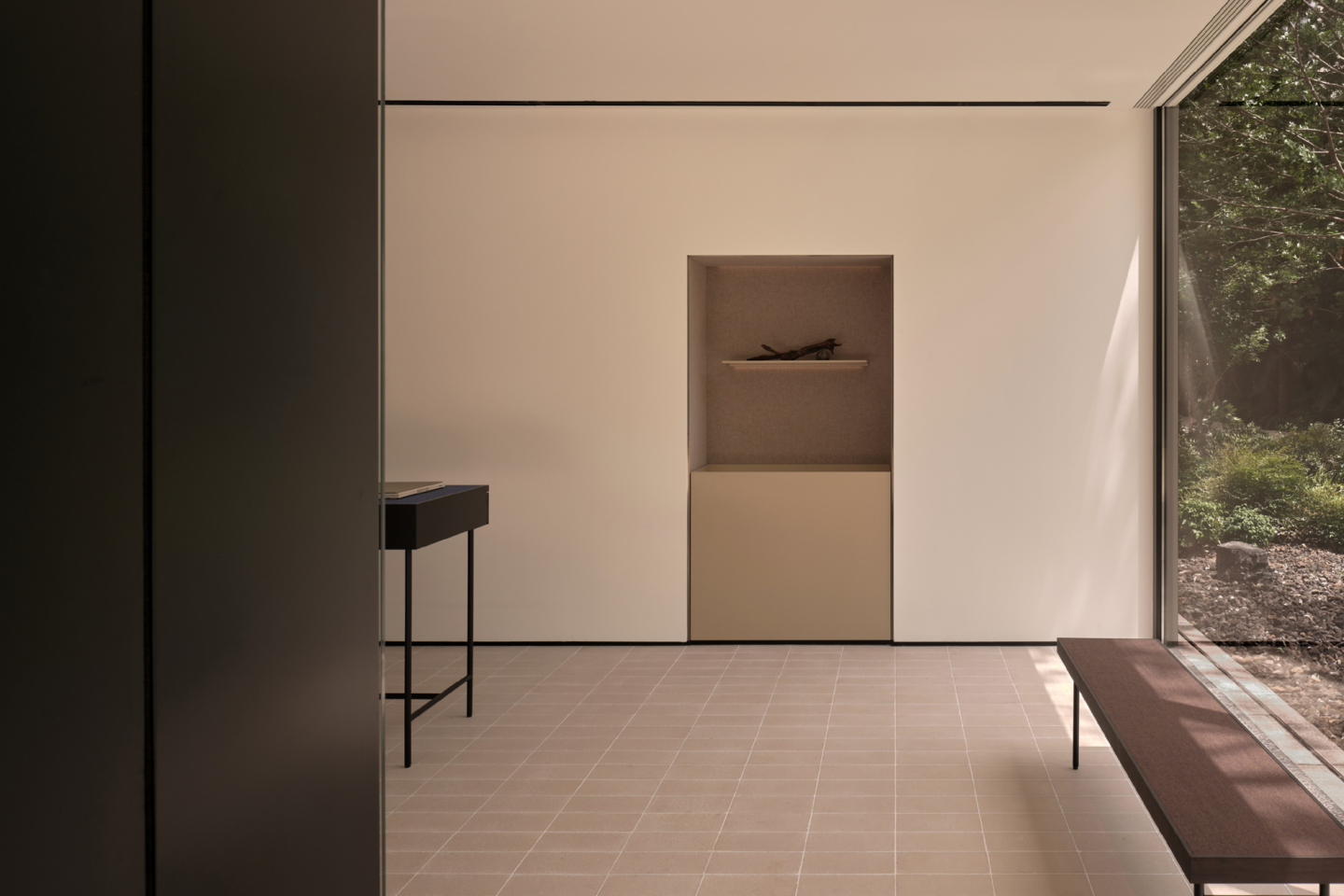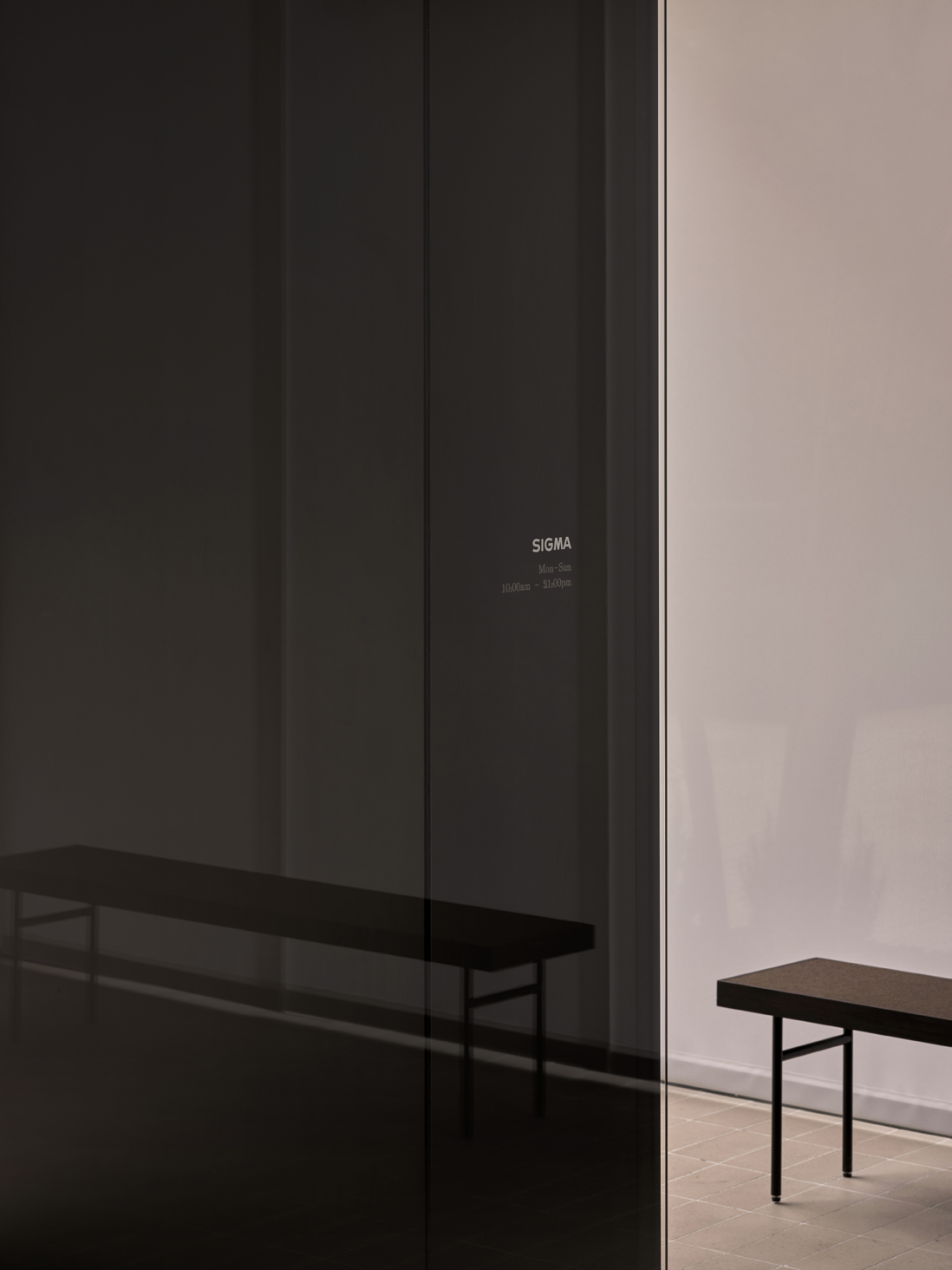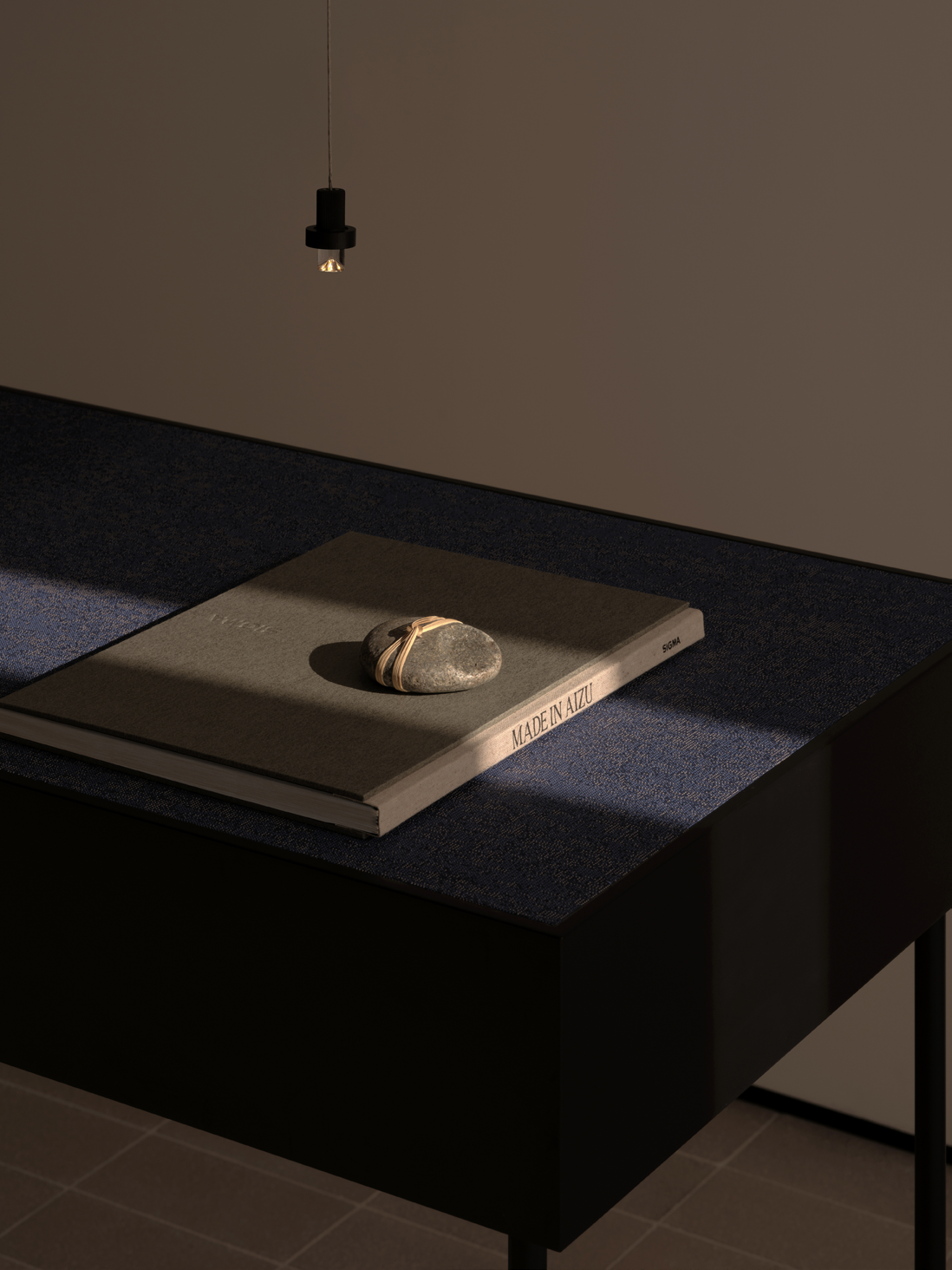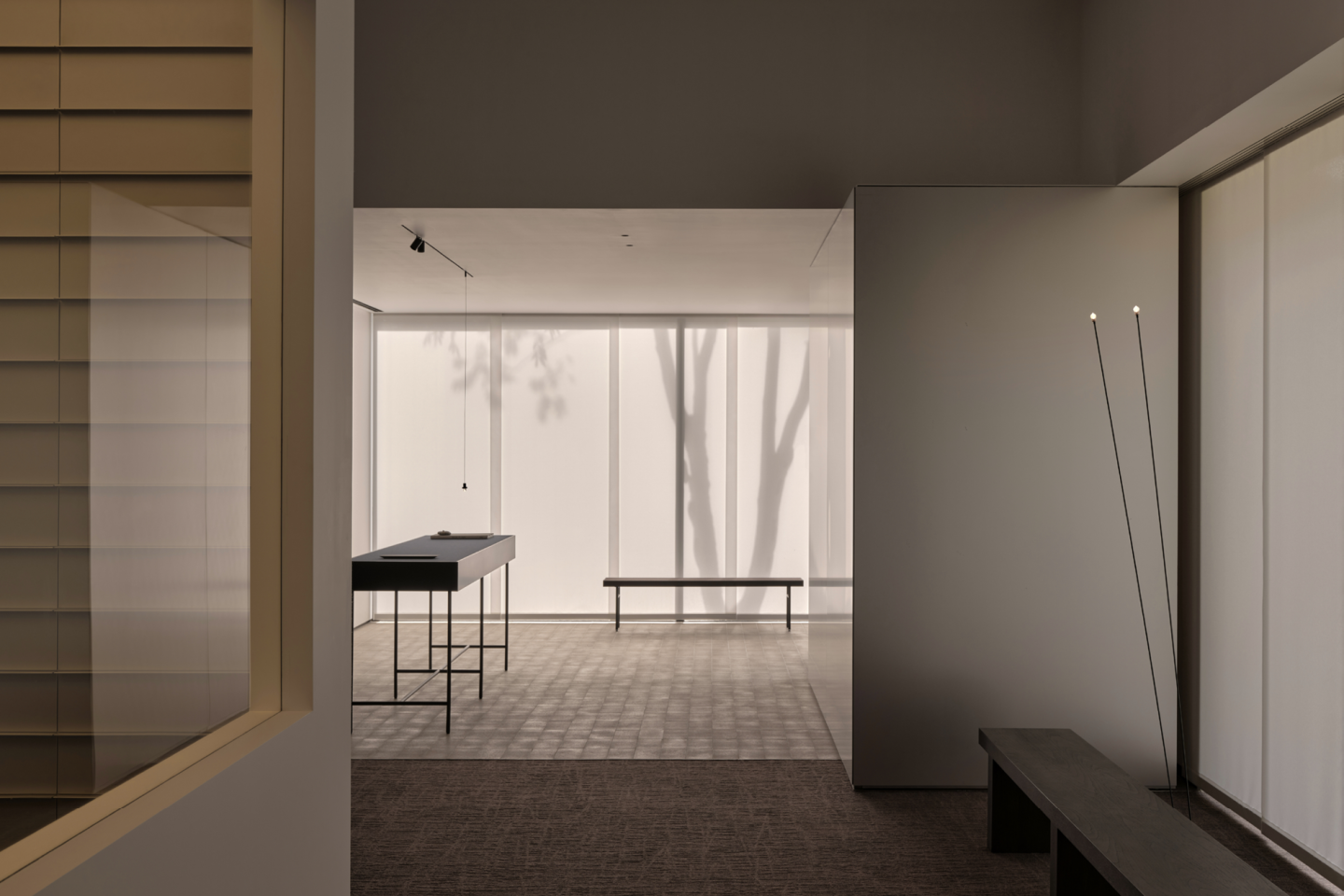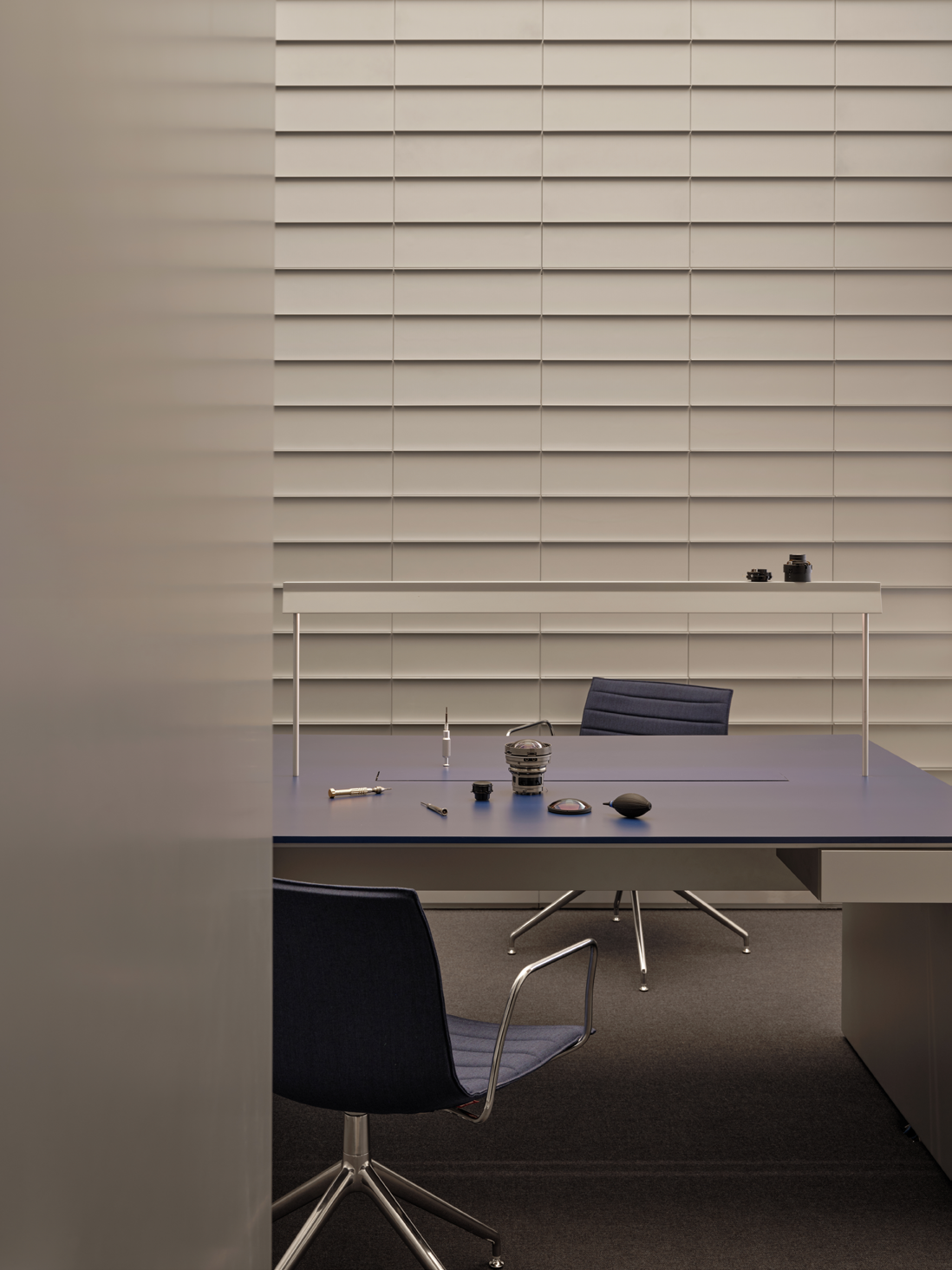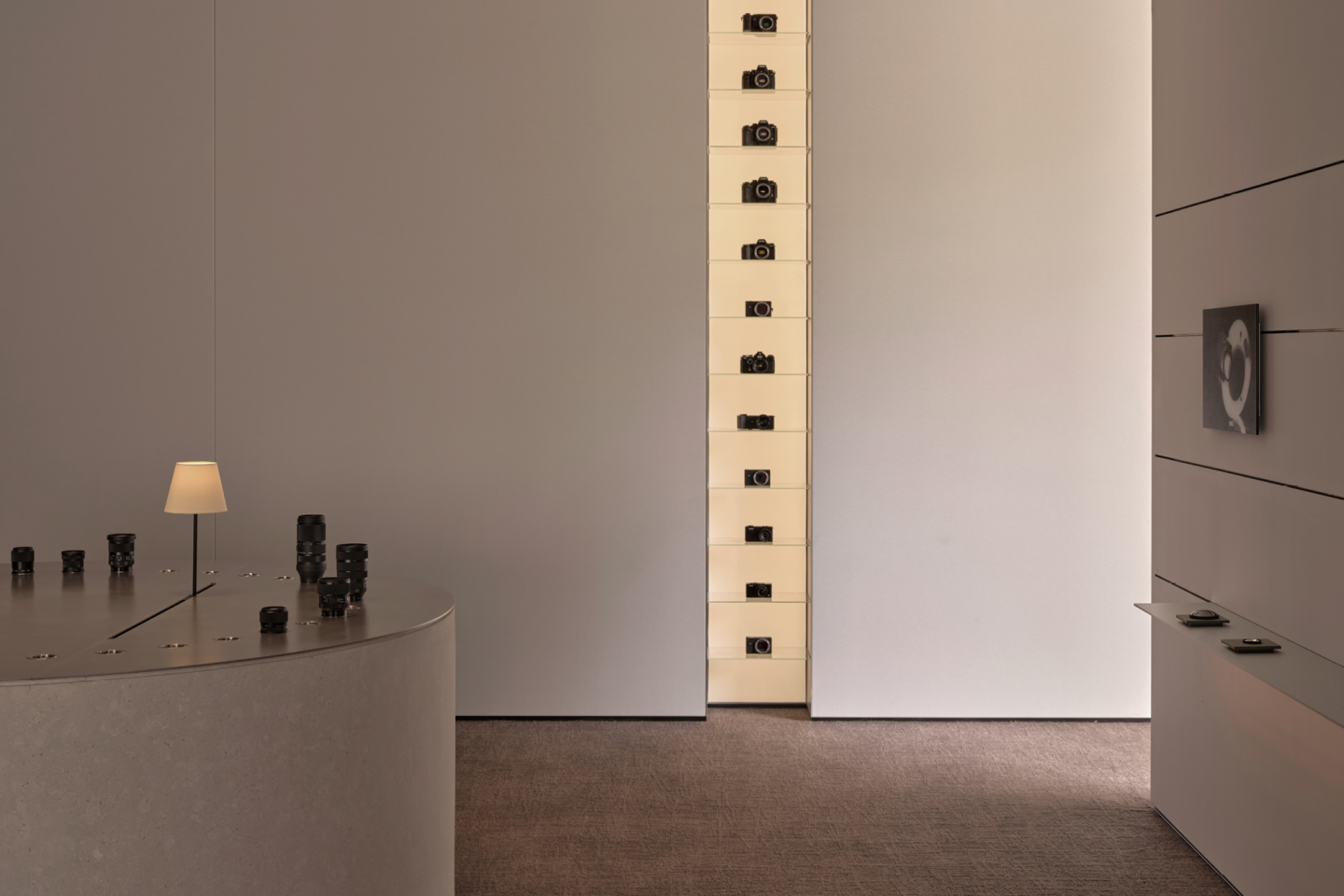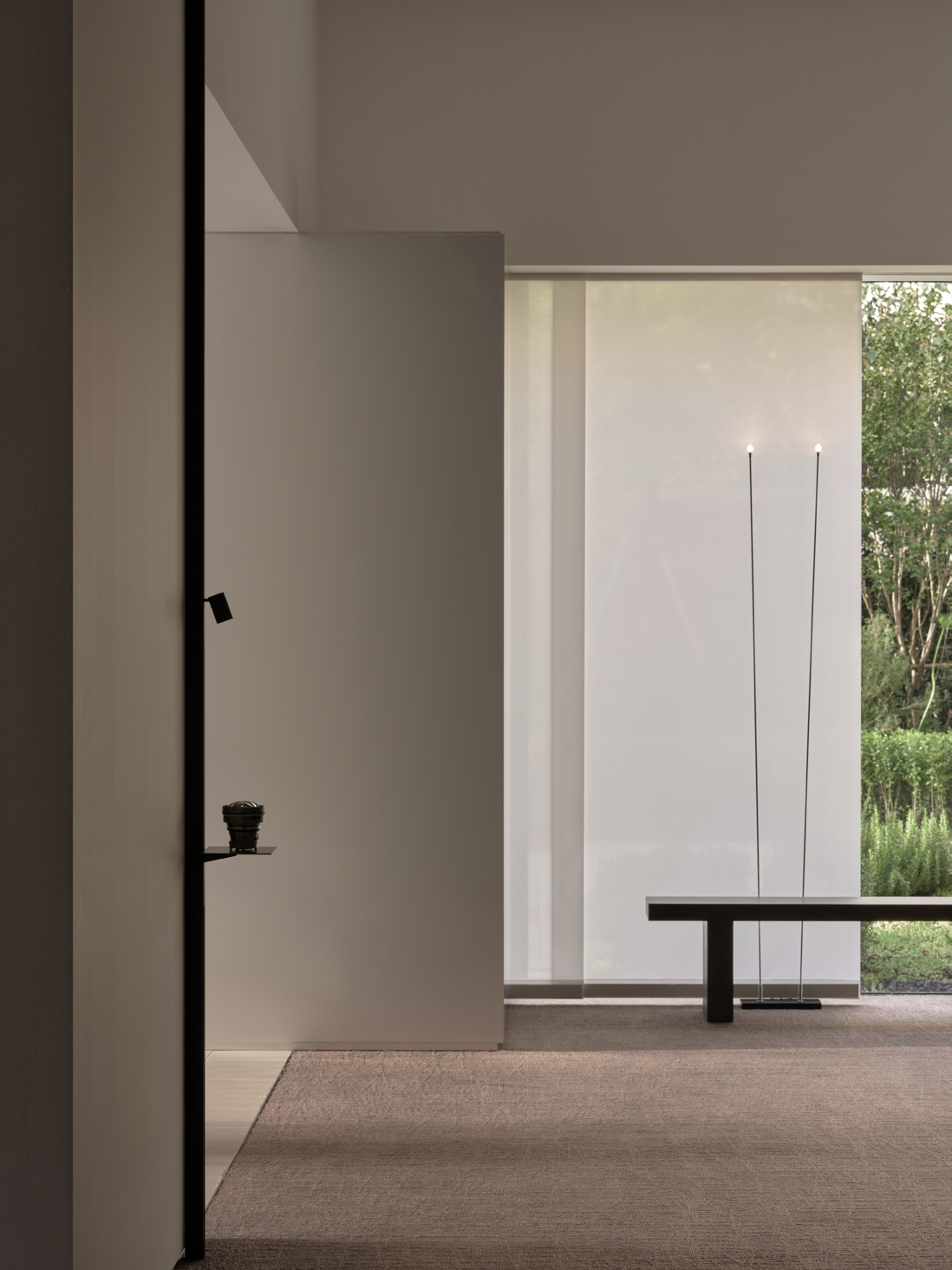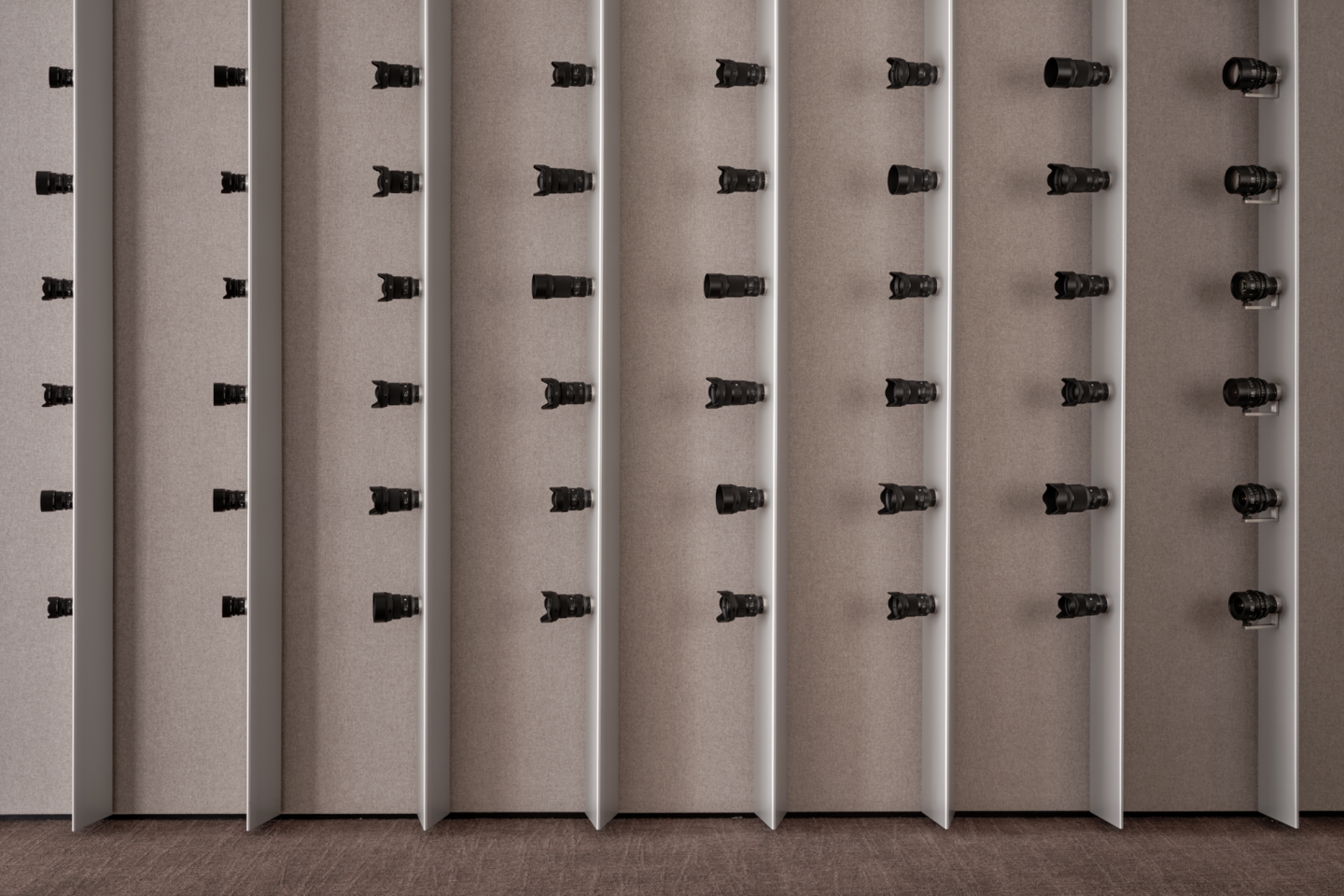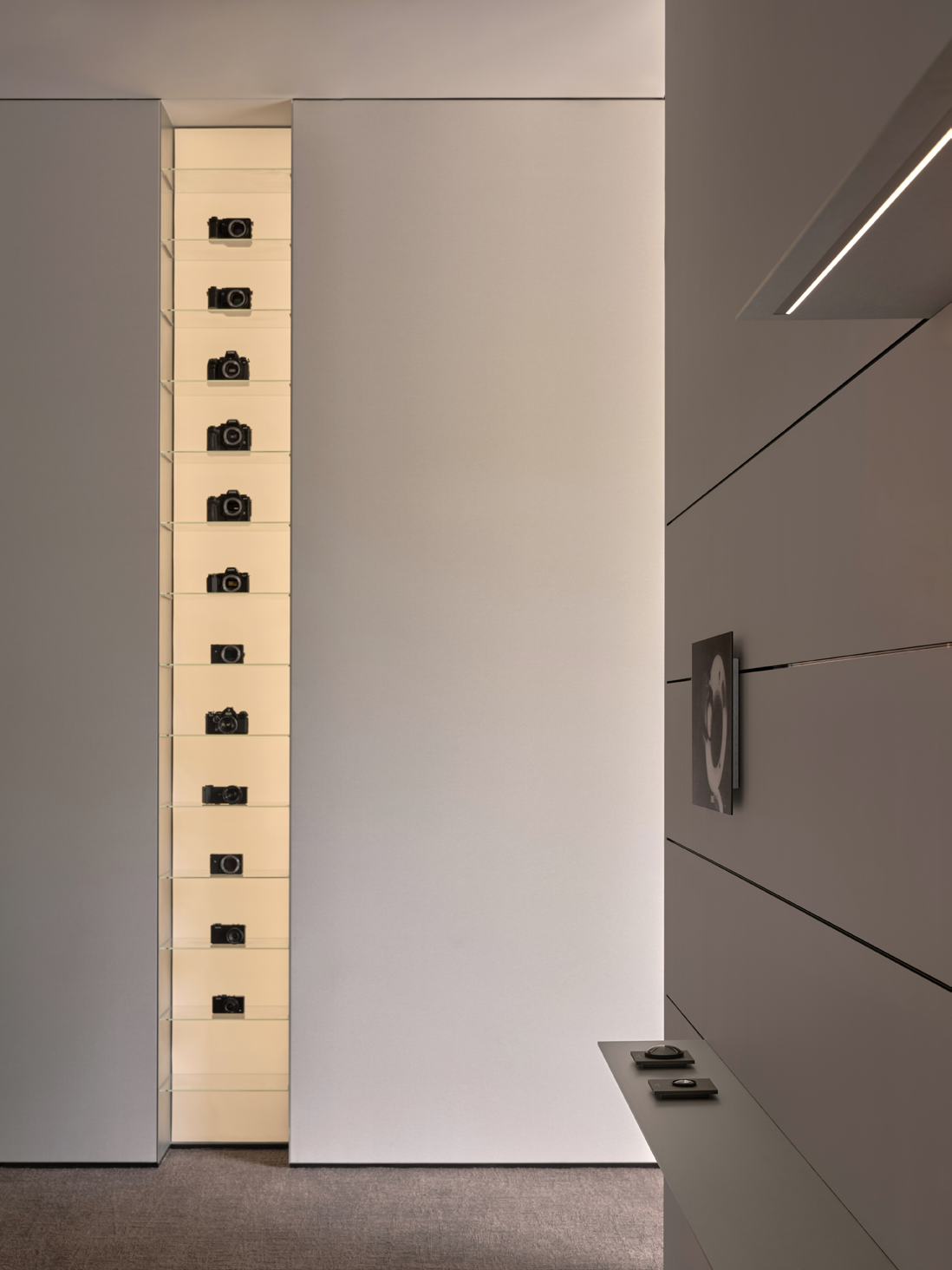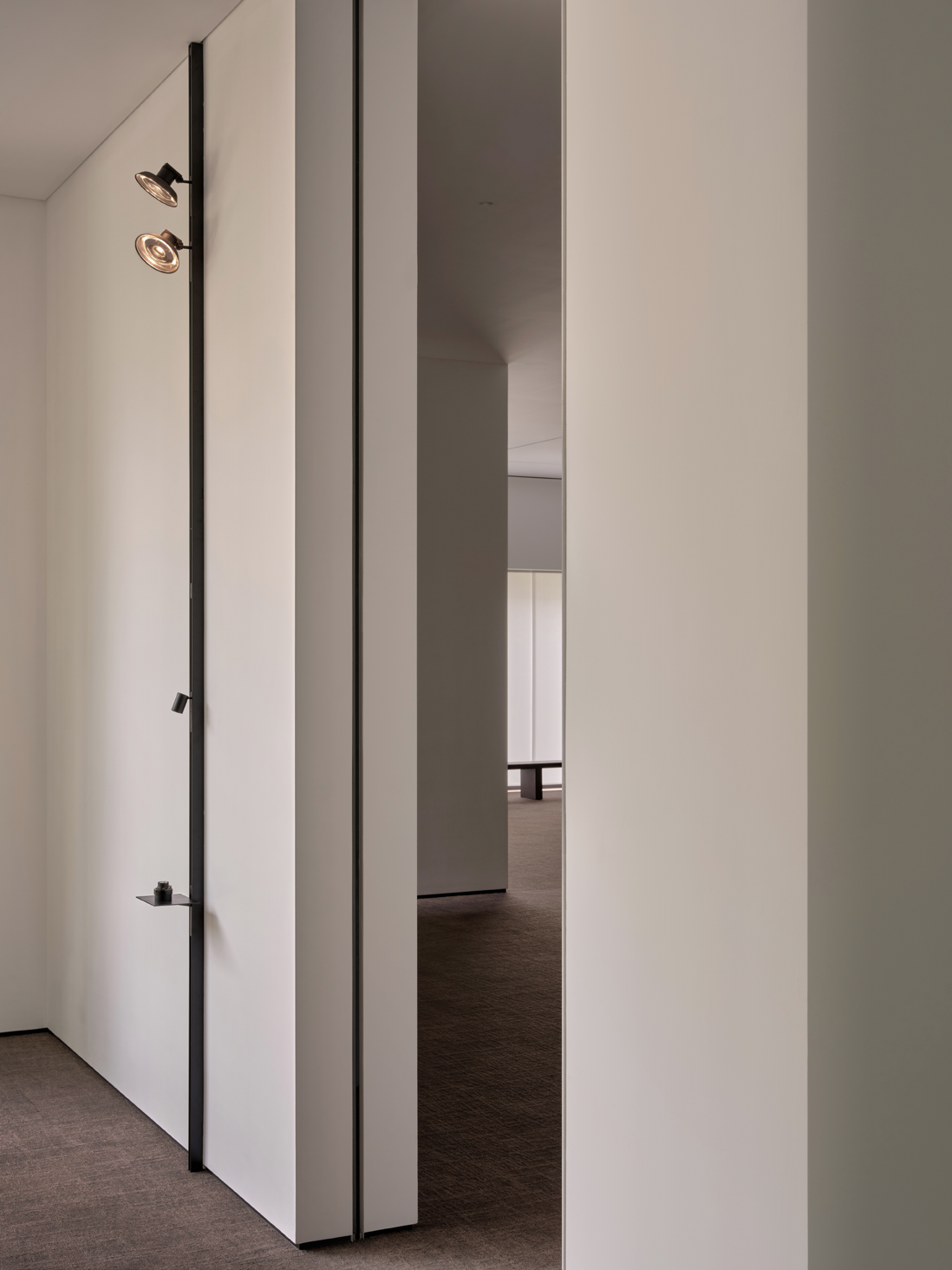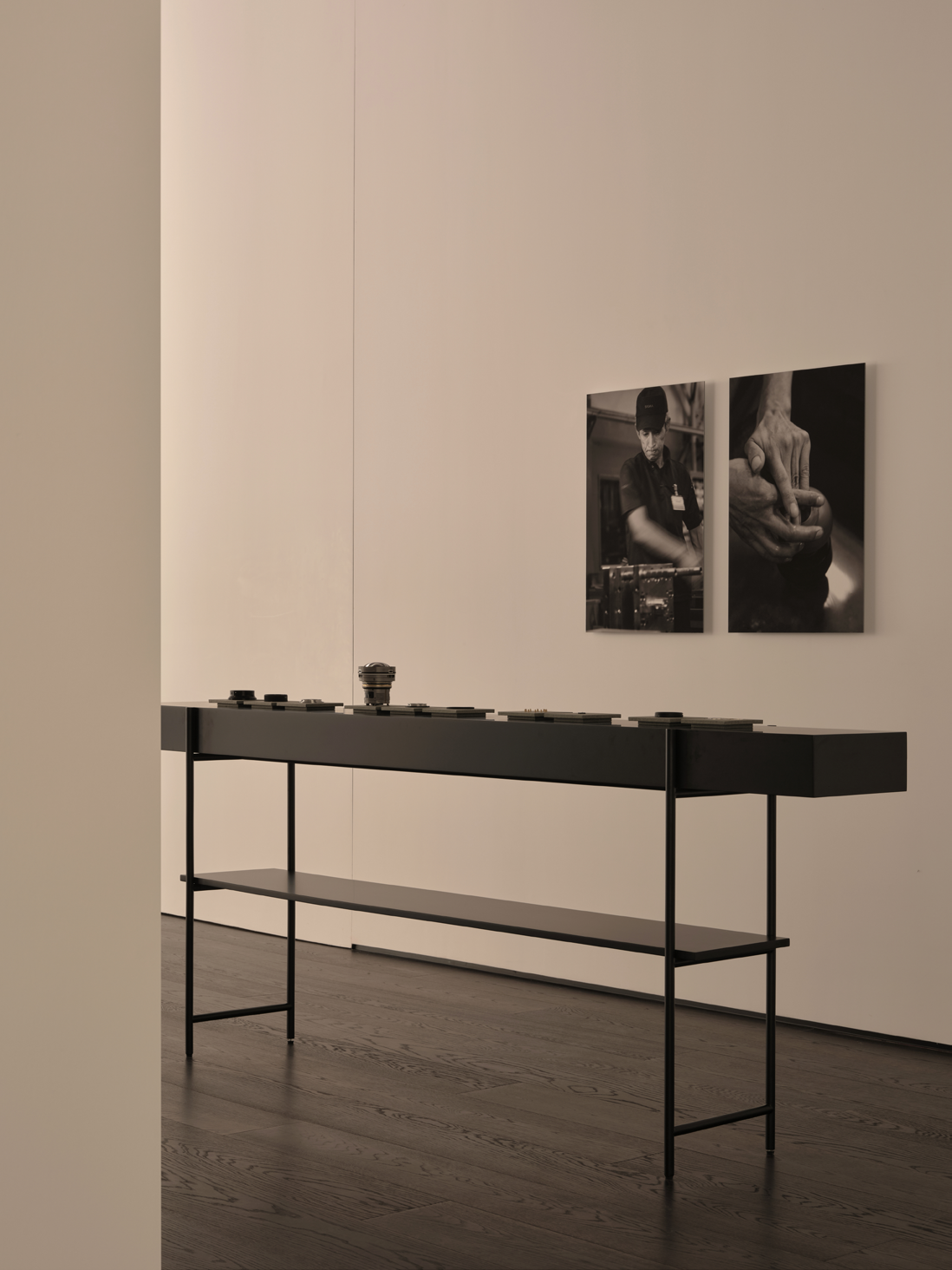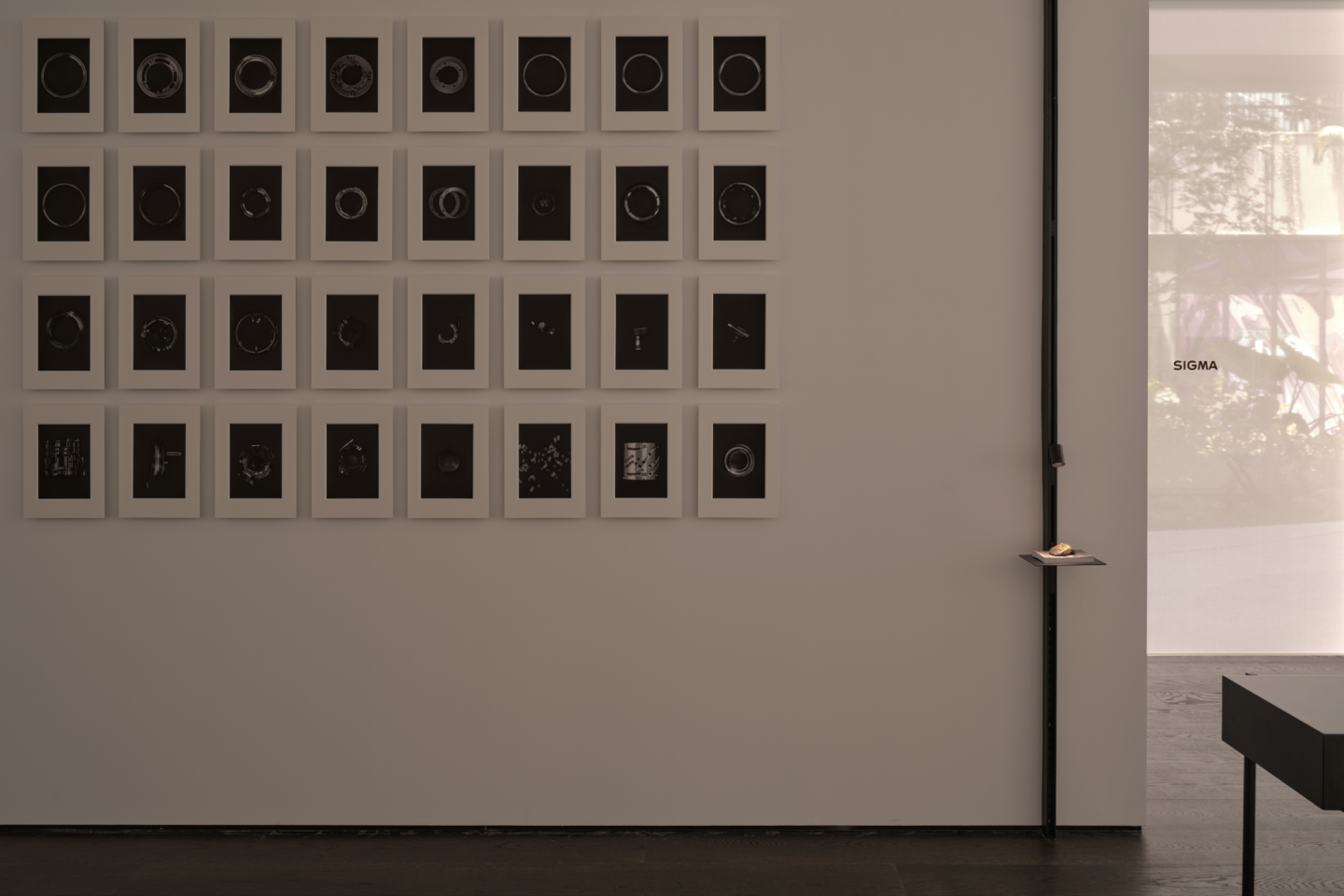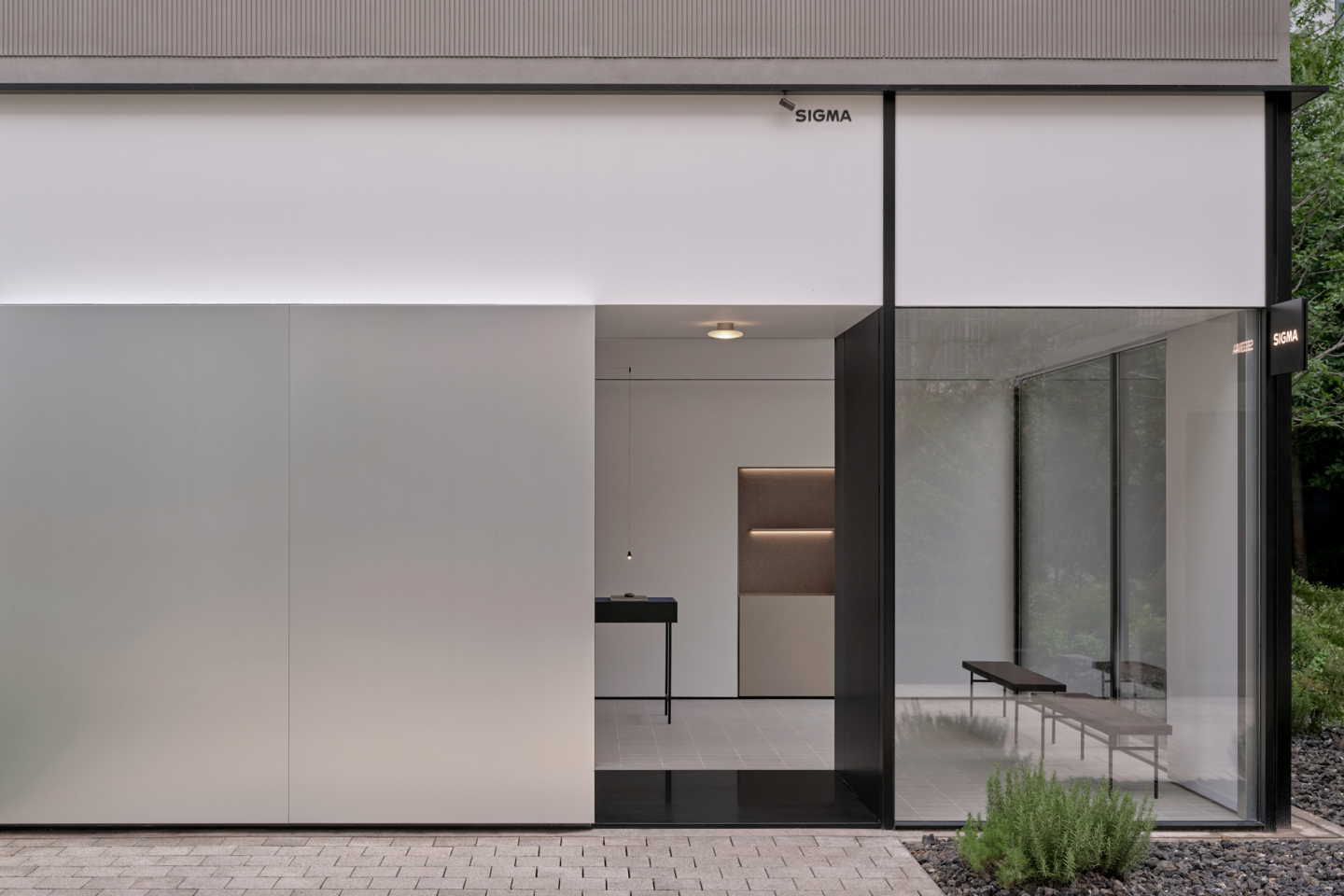SIGMA Space
Location: Shanghai, China
Area: 500 sqm
Status: Complete
Completion: Sep 2024
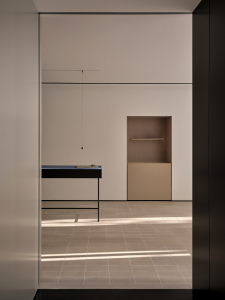
Made in Aizu: The Art of Natural Craftsmanship
The Ways of Being
Aizu’s pure natural environment and rich cultural landscape prompted SIGMA to root its brand in this region. Abundant water resources nurture life here and play a critical role in optical manufacturing. “From grinding to polishing, lens production requires large amounts of clean water,” explains SIGMA Global CEO Kazuto Yamaki. “My father often said, ‘Like water through a river.’ For manufacturers, every step in the factory must flow smoothly, without stagnation or waste, minimizing environmental impact.” This relentless pursuit of craftsmanship and comprehensive control over production and quality form the proud “MADE IN AIZU” label for SIGMA.
Reflecting on the initial brainstorming with the brand team last July, designer Gao Ya recalls, “We listed all the keywords related to the brand, gradually forming a clear concept in our minds—this space’s purpose is not sales, but experience.”
The 500-square-meter raw space became the designer’s canvas, adhering to SIGMA’s three guiding principles: The Ways of Being (reception area: embodying corporate culture), The Ways of Crafting (display area: pursuing craftsmanship), and The Ways of Seeing (gallery area: respecting artistic creation). These three functional zones are meticulously aligned, resonating with the brand’s philosophy. “Echoing the brand’s ethos, we needed to create a space as pure as water to accommodate SIGMA’s diverse potential. As the president often says, ‘Beyond the technology is ART,’ which was a crucial part of our space planning and design,” says ONOAA STUDIO’s lead designer Chen Peng.
Upon entering, the space immediately offers a sense of intimacy. The ceiling height was reduced from 3.6 meters to 2.6 meters. This reception area, akin to a “foyer,” is filled with neutral tones: pure white concrete walls, gray-beige handmade brick flooring, deep blue stained wool fabric on the reception desk, and warm brown niches.
Equally striking is the brand’s product repair room, visible to all customers. As an integrated optical equipment brand, SIGMA independently designs and manufactures everything from tiny screws to parts and molds, all produced at the Aizu factory, enabling faster and more detailed product development. The compact repair room required a new approach to storing these small parts while allowing workers easy access. The designers created a storage solution with drawers covering three walls, enhanced by built-in illuminated ceilings, giving the room a laboratory-like serenity. Two workbenches face each other, with flexible wooden panels and windows, offering various possibilities for observation and interaction. This customer-facing communication model aligns with SIGMA’s long-standing commitment to involving professional technicians in every stage of production and after-sales service, accumulating rich experience, knowledge, and expertise that foster new ideas. Design, manufacturing, inspection—SIGMA maintains the highest standards across all products.
The Art of Craftsmanship: Modern Artisanship
The Ways of Crafting
Cameras and lenses are the core of SIGMA’s business philosophy and artistic vision. With deep respect for art and consideration of the photographer’s perspective, the essence and joy of photography are continually reexamined.
“Though cameras and lenses are high-tech devices, they are just the first step. The imaging industry relies on the people who use these devices. Therefore, when we produce equipment, we must do so with respect for the users and for art,” says Kazuto Yamaki, drawing a clever analogy: “Like athletes striving for excellence at the Paris Olympics, we, as manufacturers, pursue excellence in production—this process is also an art.”
SIGMA’s new product display area embodies the brand’s uncompromising pursuit of craftsmanship, showcasing cameras and lenses that connect users with their creative work.
The area features a large brown wool carpet with a compact structure that, after milling, transforms the coarse wool into a soft, felt-like texture with an earthy ruggedness. “When thinking of Japanese style and optical products, people usually imagine black, white, and gray. Initially, we conceived of rational, restrained colors, but after discussions with the brand, President Yamaki encouraged us to try other colors, believing the brand should always embrace new attempts,” says designer Gao Ya.
Spanning the space is a three-meter-tall, ten-meter-long lens display wall, with triangular metal plates and over 100 custom camera mounts showcasing SIGMA’s signature product lines: Contemporary, Art, Sports, and Cine Lenses for filmmaking.
At the center is a circular display table with a limestone base, echoing the shape of a camera lens. Limestone contains fossils of ancient marine life, compressed and weathered over millions of years, frozen in time. This natural freeze-frame parallels the art of photography—capturing a moment. The contrast between natural stone and man-made metal adds tension and intrigue to the design, with custom camera mounts on the table for users to try different lenses.
Just steps away is SIGMA’s camera display area. Producing cameras was the lifelong dream of SIGMA’s founder, Michihiro Yamaki. After his father’s passing in 2012, Kazuto Yamaki continued to pursue this dream, stating, “Imaging cannot exist without cameras. To achieve excellence in optics, we can’t just make lenses.” Today, SIGMA’s dp and fp series, with the highest image quality from the Foveon sensor and high-performance lenses, stand out in the digital camera field.
The display area highlights the brand and design team’s interpretation of “The Ways of Crafting.” Yet, a broader question emerges—Is pursuing such meticulous craftsmanship in an era of rapidly evolving optical products a step backward? “I don’t think so,” insists Kazuto Yamaki. In his view, the same machinery operated by different people produces different results. Every lens undergoes countless refinements, reborn from raw materials. “Combining modern equipment, the hands of artisans, and a commitment to craftsmanship is the only way to create perfect products.”
Beyond Technology, Let Art Speak
The Ways of Seeing
Fireworks explode brilliantly as they ascend the night sky. At SIGMA, fireworks symbolize the yearning for innovation and hope among optical craftsmen. Each year, regardless of cost or commercial return, the brand encourages engineers to pursue their passions, resulting in products like the 105mm / F1.4 telephoto lens, offering top-quality imaging for capturing the stars.
Kazuto Yamaki’s explanation of this “alternative path” reveals the brand’s concern for its employees and photography enthusiasts. “In the past, craftsmen could complete all the processes themselves, so they loved their work. But modern manufacturing is highly specialized, meaning each person works in their narrow field, making it hard to feel a sense of accomplishment. Many of our employees are passionate about photography, and we want to fulfill their pursuit and dedication, hoping they leave with rich experiences and beautiful memories.”
Through composition and color, imagery conveys human warmth, and SIGMA, throughout its decades of development, has continually reflected on art and humanity. Beyond elevating technology to art, SIGMA expresses its pursuit of originality through publications, documentaries, and exhibitions, inspiring countless photography enthusiasts.
The gallery area in the new space, used for exhibitions and events, embodies the brand’s “The Ways of Seeing.” “We approached the space’s details with the same care as SIGMA treats its lenses,” says the ONOAA team. Their design emphasizes the beauty of minimalism, with the entire area raised by 15 centimeters. The flat, Japanese-style framework gives the space a sense of ritual. Minimal interventions allow the space to serve the art displayed, much like the unpainted areas in ink wash paintings invite contemplation. The gallery connects with the Fern Garden in the Upper Sheshan District, where custom blackout curtains balance the outdoor hustle and indoor tranquility, creating different ways to use the space.
